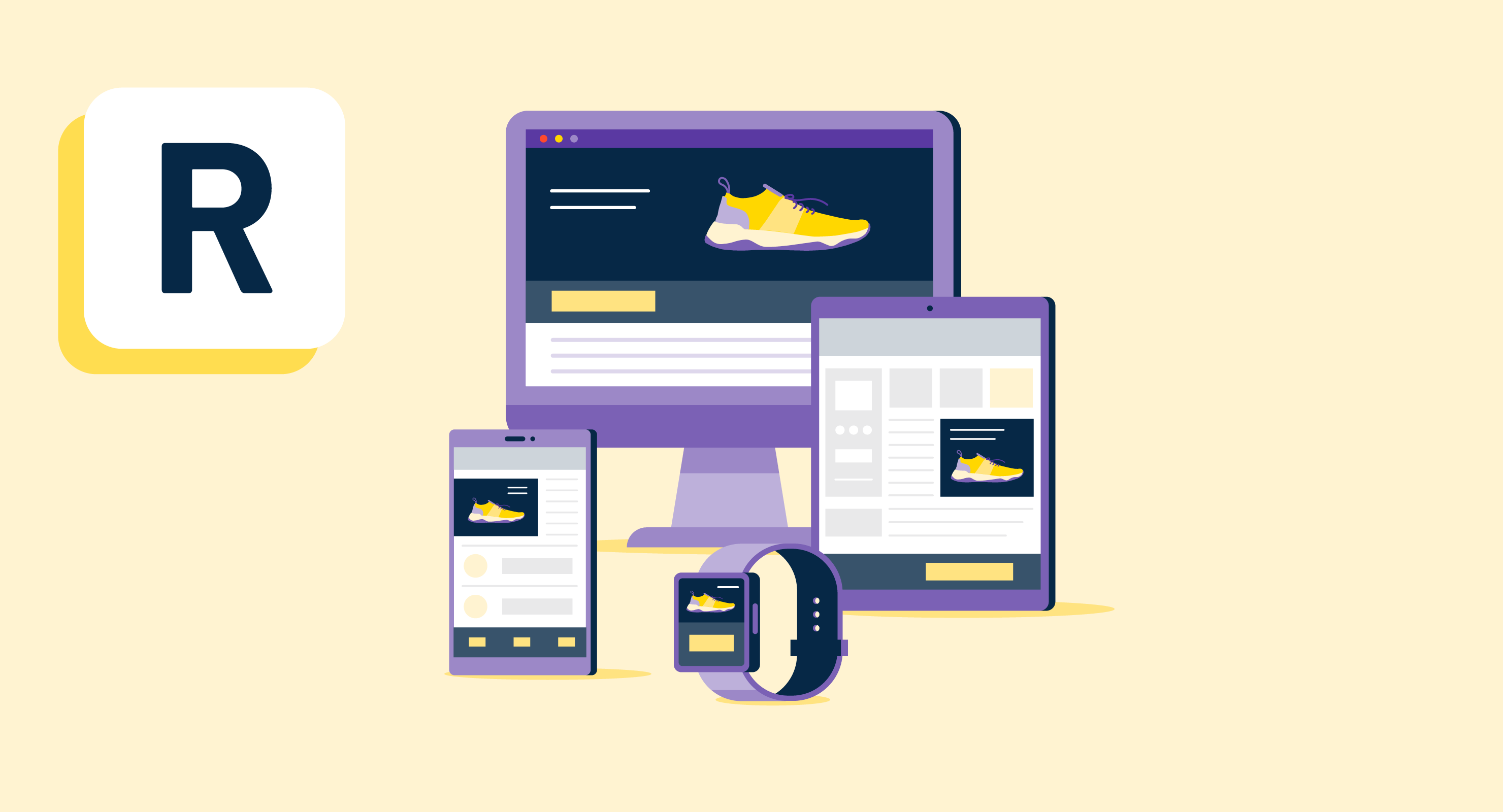What is retargeting?
Retargeting is a type of marketing that tracks visitors who have previously visited a site or engaged with a content piece and re-engages them with a higher level of assumed intent based on a user's past interactions.
Retargeting is the digital version of selling to a customer already met and engaged with. Marketers can connect with visitors even after they leave a website and work on converting them over time.
Since retargeting strategies require a lot of data to be analyzed, it’s recommended that businesses utilize retargeting software. These tools help marketers and advertisers focus their advertising budget on customers who are already familiar with their business and have previously interacted in some way, as well as optimize their retargeting audience-building efforts.
How does retargeting work?
Retargeting uses cookies, which are text files with data that identify a computer using a computer network. These files recall people visiting a website or engaging with online ads. Cookies don't store sensitive user information like visitors' names or addresses, although visit history is saved for advertising purposes.
Marketing teams use this cookie information to redirect campaigns to highly contextual audiences. Marketers identify these contextual audiences by embedding a simple JavaScript code into a website. After a visitor leaves the site, the JavaScript code drops an anonymous browser cookie to ensure ads are served only to users who have visited the site.
How to use retargeting
Buyer intent data is a crucial marketing asset in the digital era. Retargeting makes the most of this data and enables marketers to customize their campaigns based on how visitors interact with their business. Potential customers see ads that align with their interests and remain committed to their marks even as they surf their favorite blog, news site, or social network.
Here are some retargeting strategies to consider:
- Web retargeting: Web retargeting works well for any business with an online presence. Mid-market to enterprise organizations often use digital advertising product suites like Google Adwords and Google Display Networks to push display ads that target customers as they browse and search the internet effectively. For more advanced retargeting, there are remarketing lists for search ads (RLSA). Using this service, marketers work with the retargeting lists compiled by Google AdWords, and adjust the bids of selected keywords.
- Social media: Social media provides businesses a direct link to active consumers. Social media pages offer extensive audience customization using engagement metrics such as shares, likes, and comments to expand their reach further. While retargeting is beneficial across social platforms like Facebook, Twitter, Instagram, and LinkedIn, Facebook ads boasts of a robust ad targeting network. Additionally, Facebook retargeting campaigns offer a type of advertising known as sequential retargeting. This type of retargeting shows website visitors different ad campaigns every few days to slowly build up brand recognition.
- Email: Email retargeting establishes a foundational retargeting strategy and combines web and social media retargeting efforts to create a holistic email marketing strategy. There are several opportunities for a customer to provide their email by subscribing to periodic content, creating a customer account, or signing up for promotional deals and offers. Whenever a visitor provides their email address, there’s an opportunity to build an existing email audience with a prospective buyer with accurate first-party data obtained through consent.
- Link retargeting: Link retargeting works like traditional retargeting. The only difference is that the pixel is added to a branded link, retargeting people who clicked on that link. This approach is great during a slow content creation period, where brands share curated content on social media. A business can retarget the links to this third-party content to attract a larger audience.
Retargeting campaign goals
Two fundamental goals can be achieved with retargeting campaigns:
- Awareness: Awareness campaigns inform an audience about existing products, new features, or other announcements. This goal has a broader scope as it aims to target new customers who haven’t yet interacted with the brand. These campaigns generally set the stage for conversions.
- Conversion: Conversion campaigns are intended for visitors who have previously interacted with a business but haven’t been converted into customers yet. These campaigns encourage the audience to take some action on the website.
With both approaches, target audience segmentation must first be carried out. Audiences can be segmented based on:
- Behavior: Visitors who have spent more time on a site are likely to be convinced to purchase since they already seem interested. By assessing the behavior of these interested customers, different segments can be mapped out. For each segment, a customized retargeting ad can be pushed, increasing the chances of conversion.
- History: Existing customers or customers who interacted in the past are in their own segment. Retargeted ads for these customers can improve upsell and cross-sell options and a customer’s longevity within the cycle.
- Duration: It’s important to assess how long a visitor stayed on a site and how frequently retargeted ads are pushed to this visitor. Evaluating the duration of each visitor interaction can give insights into an individual’s behavior and intent.
Benefits of retargeting
Retargeting helps marketers and advertisers reach their target audience, creating brand awareness while simultaneously nudging them toward the business. Here are some of the key benefits of retargeting:
- Generate more sales: Retargeting is designed to increase revenue by generating awareness of a product or company through targeted ads.
- Target interested prospects: Unlike cold calls and emails, retargeting aims to reach prospects interested in the product and are also more likely to convert.
- Improve ROI: Retargeting boosts ROI by decreasing the total spend required to convert a customer. Since these visitors have interacted with the website and registered the business in their minds, they’re more likely to take action.
- Evergreen digital marketing strategy: Retargeting is a digital strategy that’ll continue to improve and grow in the future, ensuring a marketing practice with longevity.
- Gain insights: Marketers and advertisers can see which areas of their custom target audience have higher conversion rates after being presented with a retargeted ad for the first time after their first visit to the website . This helps marketing teams to tailor their brand messaging to serve specific segments.
- Increase brand awareness: Retargeting is a great top-of-the-funnel exercise that leaves an impression on a target audience every time they are exposed to retargeted ads. By building awareness, prospects get better brand recall and, therefore, a better chance for businesses to convert them into customers.
Retargeting vs. remarketing
Retargeting comes into the picture when we talk about potential customers visiting a website, having a basic awareness of a company or product, and being exposed to banner ads after leaving the site without taking any action. Retargeting relies heavily on cookies.
Remarketing campaigns are executed when businesses have already collected some information from website visitors in the form of a landing page sign-up, a subscription, an event attendance, or an existing customer and have delivered campaigns specifically to them. An example of remarketing is email campaigns sent to a targeted list of people informing them about new products or updates.
Remarketing and retargeting are both used interchangeably, but the only difference is how a marketing campaign is presented to an individual visitor.

Ninisha Pradhan
Ninisha is a former Content Marketing Specialist at G2. She graduated from R.V College of Engineering, Bangalore, and holds a Bachelor's degree in Engineering. Before G2, Ninisha worked at a FinTech company as an Associate Marketing Manager, where she led Content and Social Media Marketing, and Analyst Relations. When she's not reading up on Marketing, she's busy creating music, videos, and a bunch of sweet treats.

